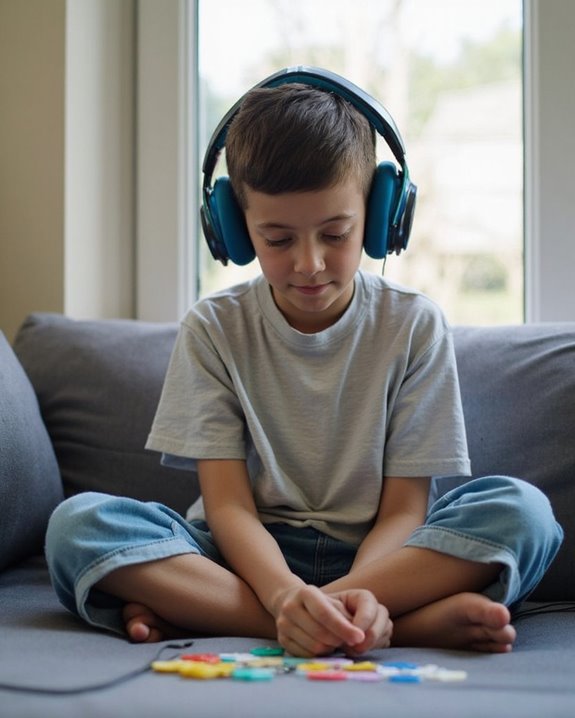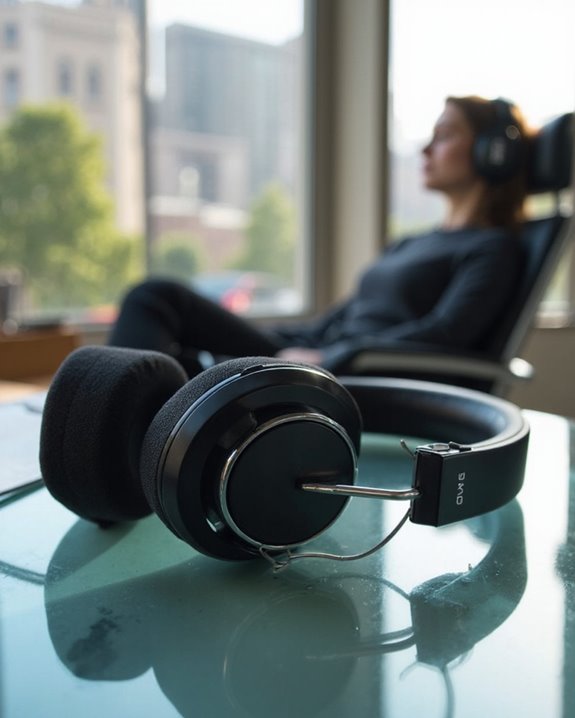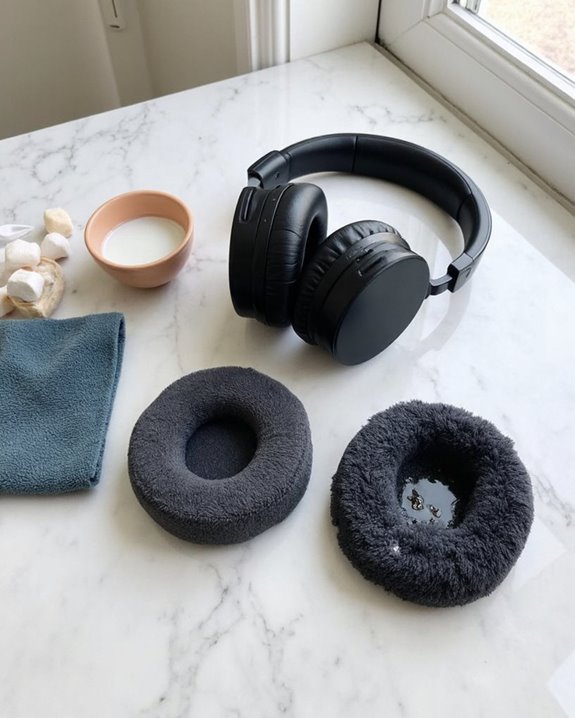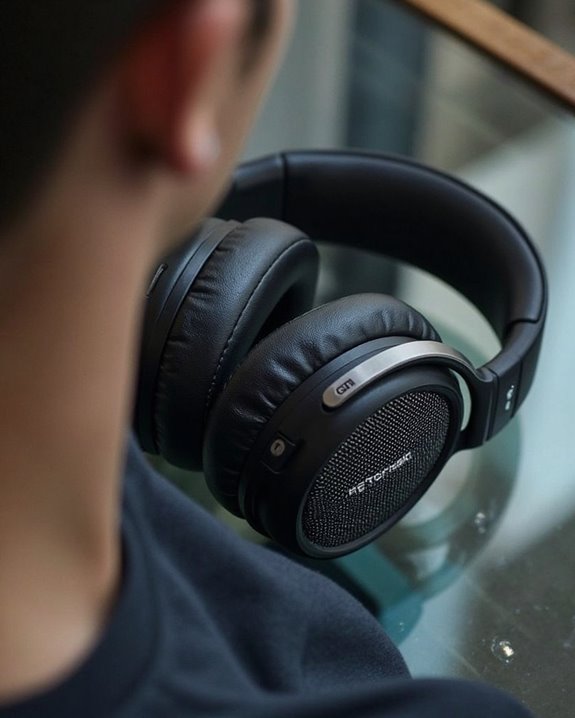Autistic individuals often wear headphones to manage hypersensitivity to sounds, a condition affecting up to 70% of people with autism compared to 8% of the general population. Headphones create controlled auditory environments that reduce sensory overload from everyday noises that can trigger anxiety or distress. This sensory management tool helps filter unpredictable environmental sounds, providing psychological benefits including improved concentration and reduced anxiety. The neurological differences in auditory processing pathways make this accommodation essential for daily functioning in overwhelming sensory landscapes.
Key Takeaways
- Up to 70% of autistic people experience hypersensitivity to sounds that can trigger distress or impair concentration.
- Headphones provide controlled auditory environments that filter overwhelming background noise and prevent sensory overload.
- Noise-cancelling technology reduces unpredictable environmental sounds during travel or in public spaces like supermarkets and restaurants.
- Wearing headphones creates a consistent auditory landscape that reduces anxiety and improves focus for daily tasks.
- Headphones serve as an accessibility tool that empowers autistic individuals to participate more fully in neurotypical spaces.
The Sensory Processing Challenges in Autism
Why do many autistic individuals experience the world so differently from neurotypical people? The answer lies in their unique neurophysiology, particularly in how sensory information is processed. Autism spectrum disorder (ASD) is characterized by atypical sensory processing that manifests as either hypersensitivity or hyposensitivity to environmental stimuli.
Many autistic people struggle with Tactile Sensitivity, experiencing discomfort from clothing tags, certain fabrics, or light touch that neurotypical individuals barely notice. Similarly, Visual Overload occurs when the brain cannot filter irrelevant visual information, making environments like fluorescent-lit stores overwhelming.
These sensory processing differences stem from neurological variations evident in EEG, MEG, and fMRI studies. The brain’s altered ability to integrate multiple sensory inputs simultaneously often results in fragmented perceptions and contributes to the restricted and repetitive behaviors commonly observed in autism. To help manage sensory overload, some autistic individuals use noise cancelling headphones that reduce disruptive background sounds and create a more controlled auditory environment.
How Noise Sensitivity Impacts Daily Life

When ordinary sounds become overwhelming, everyday life transforms into a series of auditory challenges for individuals with autism. With up to 70% of autistic people experiencing sound sensitivity (compared to just 8% in the general population), routine activities can trigger significant distress.
Travel Stress often manifests during commutes, where unpredictable noises on public transportation or traffic sounds can provoke anxiety and sensory overload. This sensitivity frequently results in unsafe incidents for approximately 52% of children who overreact or underreact to environmental sounds.
Sleep Disruptions commonly occur as noise sensitivity doesn’t diminish at night. Ordinary household sounds—humming appliances, plumbing, or street noise—can prevent restful sleep, exacerbating daytime stress and anxiety. Creating quieter sleeping environments becomes essential for managing this aspect of auditory sensitivity. Many find relief by using noise reduction devices such as sleep earbuds that offer up to 30dB of sound isolation for better rest.
Auditory Control as a Gateway to Comfort
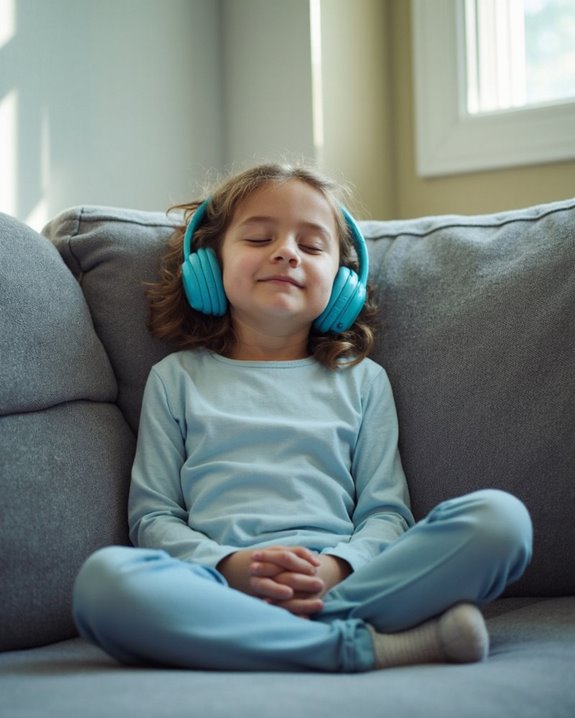
Autonomy over one’s sound environment provides essential relief for individuals with autism spectrum disorder (ASD). By using headphones, they can regulate auditory input, reducing the central gain issues that often cause overwhelming sensory experiences. This control mechanism transforms previously stressful situations into manageable ones.
Headphones serve dual purposes in enhancing both Travel Comfort and Leisure Enjoyment. During transit, they buffer unpredictable environmental sounds that might trigger auditory hypersensitivity. Similarly, they allow for improved experiences during recreational activities by filtering extraneous noise.
The psychological benefits extend beyond immediate comfort. When individuals with ASD can manage their auditory environment, they experience reduced anxiety and improved concentration. This self-regulation strategy represents more than mere preference—it constitutes an effective coping mechanism that facilitates participation in daily activities. Using headphones equipped with Active Noise Cancellation technology can significantly enhance this auditory control by effectively reducing low-frequency noise while maintaining sound quality.
Managing Sensory Overload in Public Spaces
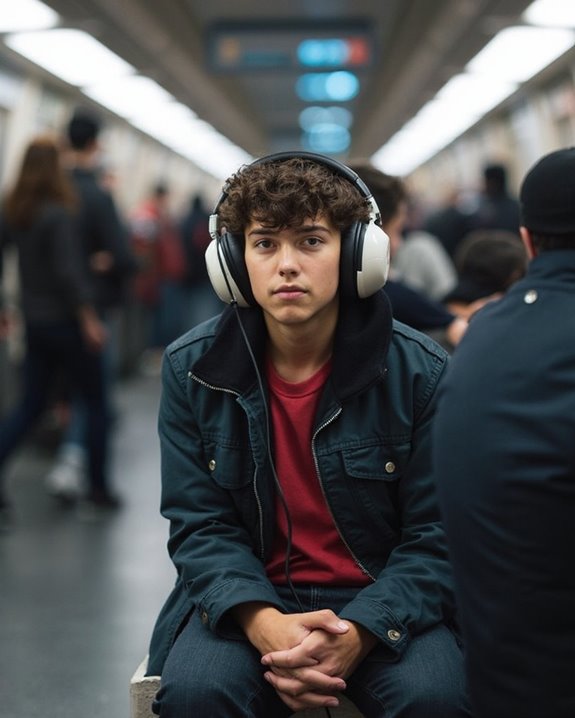
Public spaces present a minefield of sensory challenges for individuals with autism spectrum disorder. Supermarkets, restaurants, and healthcare facilities often bombard the senses with excessive stimuli, triggering anxiety and discomfort.
The concept of Public Predictability plays an essential role in creating accessible environments. When individuals know what to expect—consistent layouts, routine processes, and familiar pathways—they can better prepare for sensory experiences. This predictability greatly reduces anxiety and helps prevent sensory overload.
Recovery Spaces represent another important accommodation in public venues. These designated quiet areas allow individuals experiencing sensory overwhelm to retreat temporarily, regulate their sensory input, and recover equilibrium. Such spaces might feature dimmed lighting, reduced noise, and comfortable seating—creating a sanctuary where individuals can decompress before re-engaging with the environment.
The Science Behind Sound Sensitivity in Autism
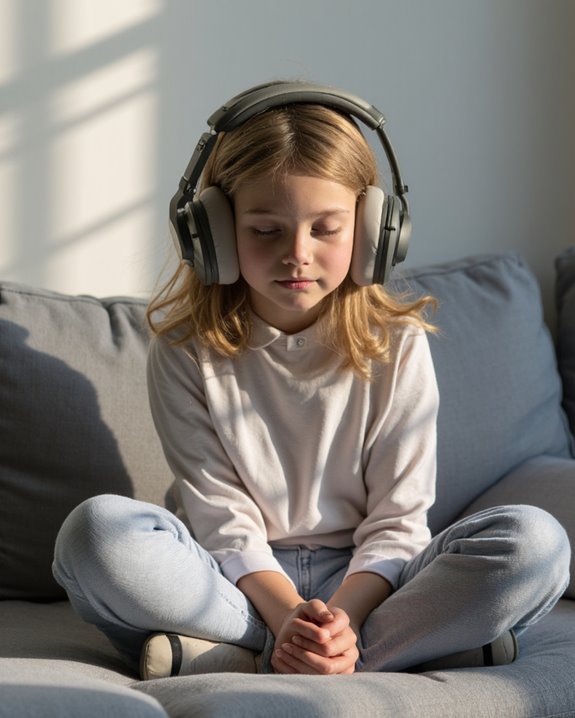
The neurological basis for sound sensitivity in autism reveals complex differences in sensory processing that affect daily functioning. Research indicates that 50-70% of autistic individuals experience hypersensitivity to everyday sounds, with brain regions like the amygdala showing increased activity during auditory stimulation.
Neural correlates of sound sensitivity include differential auditory processing pathways and altered filtering mechanisms. These neurological differences can lead to physical pain, emotional distress, and impaired concentration when exposed to sounds that neurotypical individuals process without discomfort.
Genetic factors likely contribute to the variability in sensory experiences among autistic people. While some individuals display exceptional pitch perception abilities, others struggle greatly with sound loudness. This spectrum of responses reflects the diverse sensory profiles within the autism community, with prevalence rates of hyperacusis ranging from 30% to over 90%.
Different Types of Headphones and Their Benefits
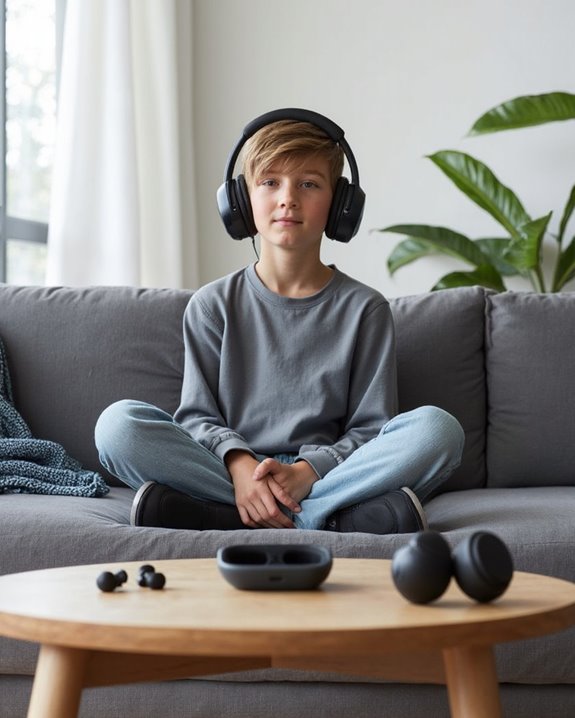
For autistic individuals experiencing sound sensitivity, selecting appropriate headphones represents a significant lifestyle adaptation that can dramatically improve daily functioning. Several options address various sensory needs while balancing Audio Fidelity with Portability Options.
Over-ear headphones provide superior noise isolation and sound quality, creating a protective acoustic barrier for those overwhelmed by environmental sounds. Their circumaural design offers extended comfort for all-day wear.
In-ear models deliver exceptional portability while maintaining effective noise isolation, making them suitable for maneuvering unpredictable environments.
For those requiring environmental awareness, bone conduction technology transmits audio through facial bones rather than the ear canal, allowing users to remain alert to surroundings while enjoying audio content.
Open-ear designs similarly maintain situational awareness, beneficial for safety during outdoor activities where complete sound isolation might create hazards.
Creating Personal Safe Spaces Through Sound Management
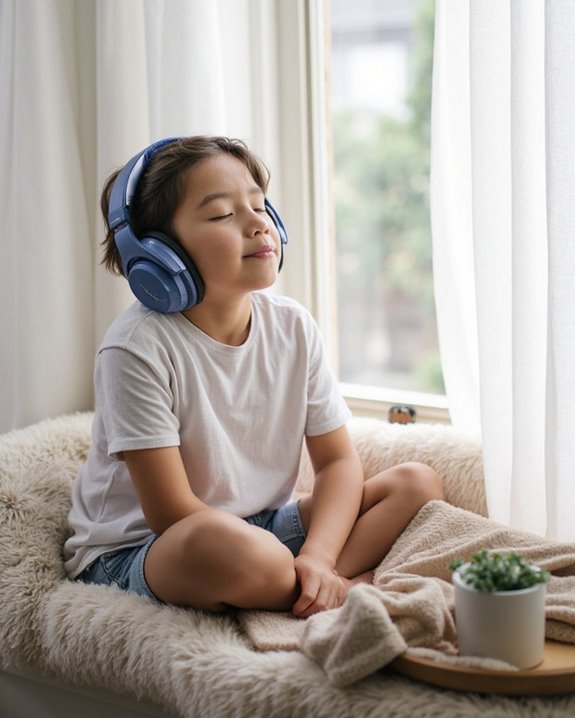
Creating auditory sanctuaries represents a crucial strategy for autistic individuals managing a world filled with overwhelming sensory input. Through thoughtful Space Design, they establish environments where auditory stimuli remain controlled and predictable, greatly reducing anxiety triggers.
Acoustic Privacy serves as a cornerstone concept, allowing individuals to filter overwhelming environmental noise through specialized headphones and environmental modifications. This approach gives autistic people autonomy over their sensory experiences in various settings.
The establishment of personalized sound environments offers several key benefits:
- Reduction of background noise distraction
- Prevention of sensory overload episodes
- Creation of consistent auditory landscapes
- Enhancement of focus and productivity
These customized environments empower individuals to participate more fully in daily activities by providing essential sensory boundaries that neurotypical spaces often fail to accommodate.
Beyond Noise Reduction: Music as Therapy
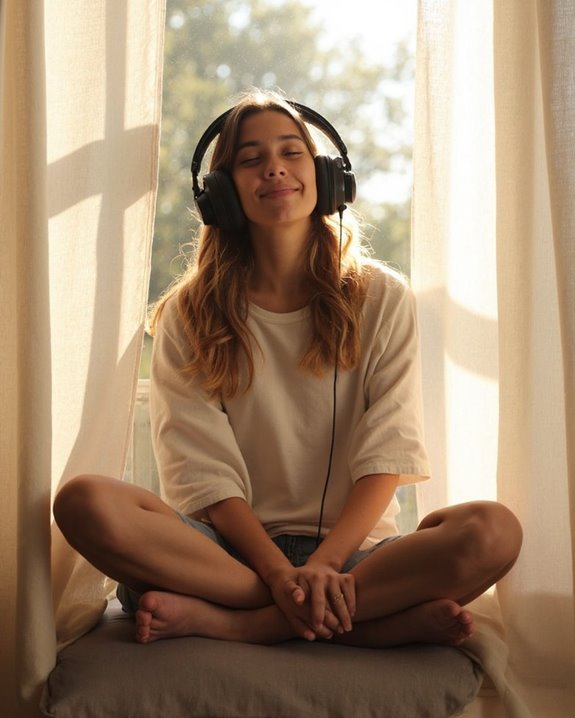
Music serves as far more than just a noise-blocking mechanism for autistic individuals—it functions as a powerful therapeutic tool with neurological and psychological benefits. Research demonstrates that carefully selected Cognitive Tunes can enhance memory, attention, and sensory integration while reducing stress levels.
Social Music experiences facilitate improved communication and interaction skills, with meta-analyses confirming significant enhancements in language development and social functioning. These benefits extend beyond therapy sessions into everyday life, where musical engagement promotes community involvement and adaptive behaviors.
Neuroimaging studies reveal that music therapy positively alters brain connectivity patterns in autistic individuals, supporting broader neurodevelopmental processes. Additionally, biological markers show reduced chronic stress levels and improved gut microbiome composition, addressing both psychological and physiological aspects of autism.
Supporting Autistic Individuals in Their Sensory Journey
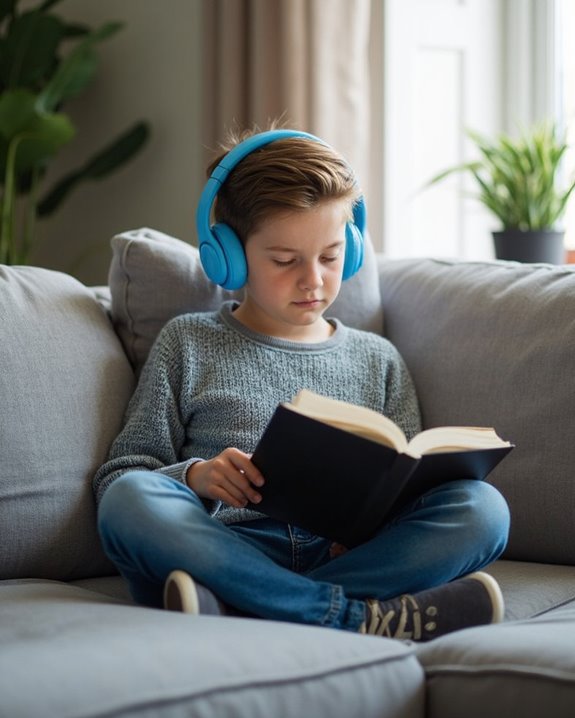
How effectively we respond to the sensory needs of autistic individuals directly impacts their quality of life and daily functioning. With over 96% of autistic individuals experiencing sensory sensitivities, providing appropriate accommodations becomes essential for their wellbeing.
Support strategies should extend beyond headphone use to include complementary approaches. Mindful breathing techniques can help regulate autonomic responses during sensory overload, while structured yoga sessions offer predictable movement patterns that improve body awareness and sensory integration.
Environmental modifications that respect individual sensory profiles demonstrate true inclusivity. These accommodations aren’t merely optional—they’re necessary tools that enable participation in environments that would otherwise remain inaccessible. When caregivers, educators, and community members understand the neurophysiological basis of sensory differences, they can implement targeted supports that substantially improve adaptive behavior and quality of life.
Building a More Inclusive Society Through Understanding
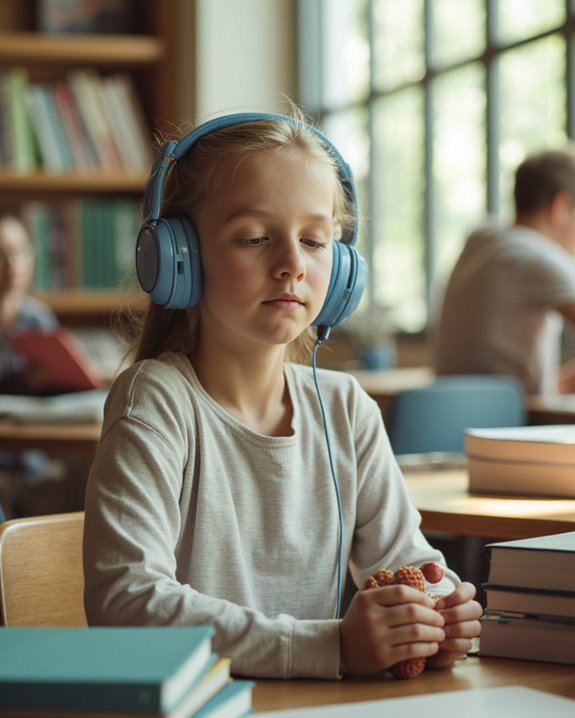
Meaningful societal change requires both awareness of autism prevalence and direct action to dismantle barriers to inclusion. With autism rates now affecting 1 in 31 children, Inclusive Policies must address gaps in healthcare, education, and employment opportunities.
Organizations can implement accommodations that respect sensory needs, including designated quiet spaces and flexibility regarding headphone use. These adjustments benefit not only autistic individuals but create more accessible environments for everyone.
Awareness Campaigns should move beyond surface-level understanding to highlight systemic challenges—such as the fact that 25% of families with autistic children face housing or food insecurity. Educational initiatives should emphasize the diversity within autism, involving autistic voices in developing materials and training.
Community engagement remains essential, as connection with autistic advocates leads to more effective support systems and reduced stigma around sensory-regulating behaviors.
Frequently Asked Questions
At What Age Do Autistic Individuals Typically Start Using Headphones?
Autistic individuals may begin using headphones at varying ages, typically correlating with early diagnosis and sensory onset. This can range from toddlerhood through adolescence, depending on when sensory sensitivities become apparent and are identified.
Can Wearing Headphones Too Often Cause Social Isolation?
Picture a silent room with an individual wrapped in an invisible bubble. Excessive headphone use can lead to social isolation and withdrawal effects if not balanced with meaningful interaction and environmental engagement.
Are There Alternatives to Headphones for Noise Management?
Alternatives to headphones include earplugs, white noise machines, and environmental modifications like soundproofing materials. Sensory tools such as weighted blankets and deep pressure exercises can also help manage noise sensitivity through alternative sensory input.
How Do Schools Accommodate Students Who Need Headphones?
Schools implement educational adaptations through IEPs and 504 plans that permit headphone use. Inclusion strategies include teacher training, classroom modifications, and legal support under IDEA to guarantee students with sensory needs can fully participate.
Do Insurance Plans Cover Specialized Noise-Canceling Headphones?
Some insurance plans may cover specialized noise-canceling headphones when prescribed as medically necessary. Coverage policies vary greatly between providers, and successful insurance claims typically require detailed documentation from healthcare professionals.

